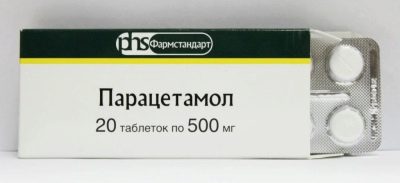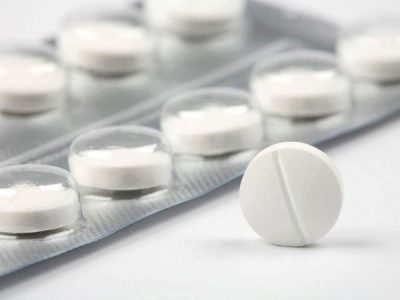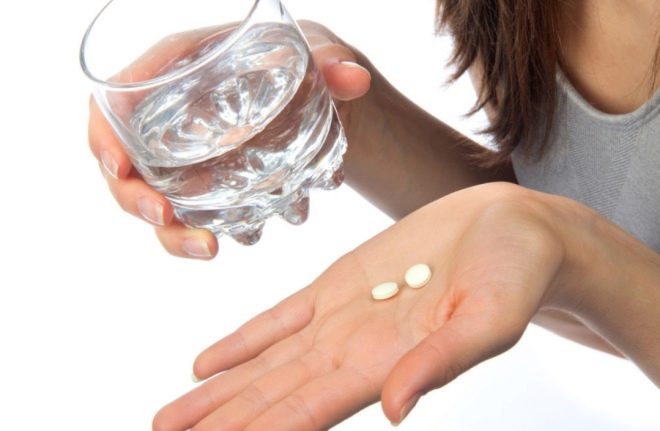"Paracetamol" for nursing mothers: instructions for use
When a woman breastfeeds a baby, she has to avoid taking various medications that can penetrate the body of crumbs with breast milk. Therefore, if a nursing mother caught a cold or has a headache, she often does not dare to help herself with medication. However, to endure the pain or suffer from fever is not at all necessary, because it can affect the amount of breast milk. It should only choose a safe and effective means that many doctors consider "Paracetamol."
What is this drug?
"Paracetamol" can be called one of the most popular drugs. It is widely available in pharmacies, as it is produced by many pharmaceutical companies and is sold without a prescription. Another advantage of it is a large range of dosage forms, because "Paracetamol" happens in tablets, suspensions, solution for pricks, candles and effervescent tablets.
The action of any form of the drug provides the substance of the same name, due to which "Paracetamol" can beat down the heat and reduce pain. Such therapeutic effects are associated with the effect of paracetamol on the production of prostaglandins - active substances that are synthesized during the inflammatory process. In particular, the drug blocks the enzymes called "cyclooxygenase" that regulate the synthesis of prostaglandins.
Is it allowed during lactation?
The instructions to "Paracetamol" noted that this medicine is acceptable to take when breastfeeding, but under certain conditions, which will be described below.
In comparison with analogues with analgesic and antipyretic effects, Paracetamol has many advantages.
- The drug is rapidly absorbed, and its effect begins to appear after 40-60 minutes after administration. In this case, the drug also quickly leaves the female body with urine. Literally after 3-4 hours only traces of it remain in the blood.
- The active substance of the drug enters the mother's milk in a small amount of only 0.04-0.23% of the accepted dosage. Therefore, the effect of "Paracetamol" on the baby's body will be minimal if you follow the dose prescribed by the doctor and do not breastfeed the baby immediately after taking it.
- Although paracetamol has a very weak anti-inflammatory effect associated with the lack of influence of the drug on cyclooxygenase in peripheral tissues, but this is precisely what causes the absence of some adverse reactions characteristic of many analogues. This is a damaging effect on the digestive tract and disorders of water-salt metabolism, which lead to edema. Paracetamol has no such negative effect.
In any case, a nursing mother should remember about her responsibility for the health of the toddler, so you should not self-medicate. It is best to take "Paracetamol" if necessary, first consult with your doctor, who will take into account the presence of contraindications and select the appropriate dosage.
When is it used?
The most common reason for using Paracetamol when breastfeeding is fever. The drug is in demand for influenza, colds, acute respiratory infections and other diseases that indicate a rise in body temperature.
Medication is also taken for pain of moderate strength, for example, for migraine, toothache, trauma or pain in the muscles.
Can it hurt?
The harmful effects of "Paracetamol" can occur in cases where this drug is contraindicated, for example, if the nursing mother has hypersensitivity to the selected dosage form or in the woman's stomach there are ulcerative lesions. The likelihood of negative effects of "Paracetamol" increases with various chronic pathologies, for example, if the patient has diseased kidneys, bronchial asthma, or liver disease. In addition, the drug is contraindicated in newborns, so in the first month after birth, its reception is undesirable.
Among the possible side effects of "Paracetamol" in the instructions note an allergic reaction (rash, itching, cough, etc.) and symptoms of the digestive tract (bloating, heartburn, nausea, etc.). In this case, it is important for the nursing mother to closely monitor the reaction not only of her body, but also of the child, since all the side effects can occur in the baby.
If, after taking “Paracetamol,” a mom or baby has some side effects, you need to give up this medication and replace it with counterparts with a different composition.
It is equally important to consider whether the woman is taking any more medicines, since some drugs may reduce the therapeutic effect of Paracetamol or increase the risk of its side effects. Harm brings and too high a single dose of the drug, and its excessively long reception.
To avoid an overdose, you must carefully follow the instructions of the doctor and not take the drug too often. If an overdose occurred, you should immediately inform the doctor.
Application features
In order for the drug to really ease the condition of the nursing mother, and its harmful effect on the crumbs was minimal, it is necessary to take into account such nuances.
- Nursing mothers are usually prescribed "Paracetamol" in pills, because taking such medicine is convenient and simple. The dosage of the active substance in one tablet is 200 mg or 500 mg. At high temperatures, it is usually prescribed 500 mg per dose, and for pain, a smaller dose (200 mg) can be taken, as it may be sufficient and will eliminate the pain. If these dosages did not help, they can be increased, but you cannot take more than 1000 mg immediately.
- In addition to pills, breastfeeding women can use suppositories, which are also available in dosage for adults. In this "Paracetamol" there are no chemical excipients, which will reduce the harm of the drug to the baby. In addition, he will help out if it is impossible to receive through the mouth.
- The most optimal time for the use of "Paracetamol" is the period immediately after feeding. After 40-60 minutes, the concentration of the active substance in the mother's blood will increase to a maximum, and then begin to fall. For this reason, it is recommended to wait at least 2 hours until the next feed. If a woman can not feed the baby for 3-4 hours after taking “Paracetamol”, this is even better, since the medication will completely disappear and will not affect the infant.
- It is recommended to take medication for fever only at a rate of more than 38.5 degrees. If the temperature has risen slightly, it is necessary to give the body itself to fight with a cold or use folk remedies, for example, drink tea with raspberries, make wiping or cold compresses.
- Drinking "Paracetamol" for headache or other pain, too, should not always. If the pain is weak and tolerable, then there is no need for pills or candles. In such cases, nursing mom will help compress, chamomile tea or head massage. If the pain is quite severe and affects the general condition, then you cannot do without anesthetic.
- If a single dose of “Paracetamol” has relieved the pain or has returned the temperature to normal, then it is not necessary to use the product again. Prophylactic administration of such medication is contraindicated Only in the case of renewed symptoms can the drug be taken again, but not earlier than 4 hours after the previous dose.You can take it 3-4 times a day, and the duration of treatment with Paracetamol when breastfeeding should not exceed three days.
What can be replaced?
Among the analogues of "Paracetamol", which act due to the same active ingredient, can be called "Panadol", "Efferalgan" and other medicines. They are presented in the same dosage forms and help with the same indications. Possible side effects of such drugs are also the same. In the pharmacy you can also find multicomponent flu and cold remedies, which include paracetamol (Grippostad, Vicks Anti-Flu Complex, Coldrex, Rinicold, Fervex and others). However, their reception during breastfeeding is not recommended.
Replacement "Paracetamol" can be "Nurofen"Or another medicine containing ibuprofen. Such drugs are quite pronounced antipyretic and analgesic effect, as well as an anti-inflammatory effect. They can also be replaced with combined preparations that include both ibuprofen and paracetamol. Such drugs include Brustan, Nurofen Long, Ibuklin, Next and other means.
You can learn more information about this drug and the features of its use from the following video.
















